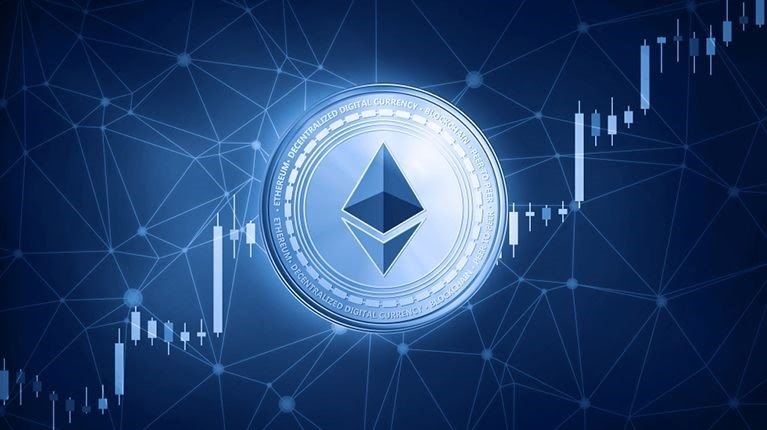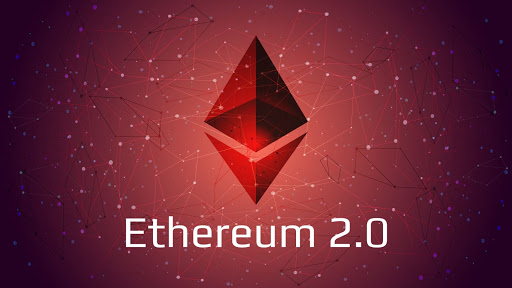Crypto Beginner Series: Ep 4 What Is Ethereum?
It is hard to have a discussion about cryptocurrencies and blockchain technology without crossing into Ethereum’s sphere of influence. Ethereum is the second-largest coin by market cap, fluctuating between 10-30% dominance of the entire crypto market cap. Bitcoin and Ethereum typically combine for 60-70% of the entire crypto market size – their influence and importance can’t be understated.
As discussed in the first blog for this beginner series, What Is Bitcoin?, Ethereum also features Ether — a “decentralized, peer-to-peer cryptocurrency that runs on the blockchain,” but their use cases are starkly different. While Bitcoin stands as a superior store of value/digital gold, Ethereum can be thought of as the world’s most programmable blockchain. So let’s jump right in.

Back in 2013, Ethereum’s founder Vitalik Buterin envisioned a new currency that functioned similarly to Bitcoin. His vision, however, was to create something that offers more than Bitcoin’s simple properties of value transfer and storage. Vitalik imagined a decentralized, programmable platform that provided a drawing board for developers and programmers around the world to build upon – out of this, Ethereum was born.
For the sake of clarification, Ether (ETH) refers to the name of the asset that powers the Ethereum network. Most people just write the word Ethereum for the network and asset, leaving it up to context to clarify.
Don’t worry though because this beginner blog will avoid the deeper/more confusing details. At this point, it is just important to note that Ethereum shares many similar characteristics to Bitcoin while also offering its own unique set of programmable properties for entrepreneurs, businesses, and visionaries around the world to enjoy.
Growing Institutional Interest
So, who is talking about Ethereum, is it actually picking up steam? In 2020, we began to see the first signs of major institutions taking the asset seriously, up until that point they had only cared about Bitcoin. Below are a few examples but certainly not the entire list.
“Over the course of 2020 we are seeing a new group of investors who are Ethereum first and in some cases Ethereum only. There’s a growing conviction around Ethereum as an asset class.” – Greyscale Managing Director
“One River Digital Asset Management has commitments that will bring its holdings of Bitcoin and Ether to about $1 billion as of early 2021.” – One River Digital Asset Management
“We are pleased to launch our new Ether futures contract.” – CME
“Given the importance of real uses in determining the store of value, Ether has a high chance of overtaking Bitcoin as a dominant store of value.” – Goldman Sachs
The Makeup Of Ethereum
So high-level interest is here, but why is Ethereum interesting? Looking back to the advent of the internet and the web can help answer this question. When the internet first came out, it was the web that was invented later that allowed users to explore, create, and service the infrastructure. For the web to run, it relied on the internet. But the web is what unlocked the potential of the internet. After blockchain technology first came out, it was Ethereum that allowed crypto users to explore, create, and service the infrastructure. It behaves almost identical to the way the web does, except it pertains to value instead of information.
Ethereum is playing a pivotal role in the transition from an internet of information to an internet of value.
Ethereum is a smart contract platform, meaning tech-savvy people can write code to conduct automated contracts. In essence, this removes human error and centralized reliance. A farmer can now automate crop collection, analyze market conditions, and sell his final products based on agreed-upon code – all without a middleman. Through this smart contract capability, Ethereum also offers its users the ability to create decentralized applications.
Despite looking just like an app you may download in the Play Store, these applications don’t depend on a centralized server. They are truly decentralized, in that they rely on code written on top of the blockchain. With Dapps, rather than relying on your government for a birth certificate or house title; or relying on a company for an insurance plan or banking number, we can truly own the assets that mean the most to us. Ethereum can and will radically change the way we interact with value.
ETH 2.0
But the story doesn’t end here, Ethereum is currently undergoing a major upgrade, the largest protocol update that has ever taken place in the crypto space. Spanning back to last year, this major upgrade will transition Ethereum from a proof-of-work consensus algorithm to a proof-of-stake. For now it’s not important you understand these more complicated concepts and we’ll get into these later on in this series. What you need to know is that Ethereum 2.0 will be quicker to use, more affordable, scalable, and secure. The necessity behind Ethereum 2.0 couldn’t be more apparent today.
Right now, Ethereum’s biggest problem is that it has become too popular. The popularity among the community has resulted in congested transactions and high fees. Decentralized finance, the future of finance, has almost entirely selected Ethereum as its platform of choice. Roughly 95% of activity lives on Ethereum. This new way of doing finance relies on smart contracts and Dapps, the service Ethereum provides. Although the community is free to use a number of alternative platforms to build on, they continue to fight over the little bit of space left up for grabs on Ethereum – a good problem to have, one that Ethereum 2.0 is designed to fix.
The Future And Beyond
So, if Bitcoin is the king of storing value, Ethereum can be thought of as the king of creating value. There are a couple of final key points you should keep an eye on this market cycle. You may have heard of the “flippening,” a spinoff of the word “halvening”. The flippening is a highly anticipated hypothetical moment of Ethereum overtaking Bitcoin’s throne as the largest cryptocurrency by market cap. For this to happen, Ethereum will need to continue outpacing Bitcoin and gaining traction from major institutions.
One major factor driving the flippening is the upcoming Ethereum improvement proposal specifically eip-1559. This improvement will restructure Ethereum’s fee distribution. Once implemented, it will reduce about 90% of daily sell-side pressure, leaving nothing but clear skies for price discovery. The perfect storm has been brewing for Ethereum over the past year. The increasing institutional interest, ETH 2.0 progress, and near deflationary tokenomics has caught the mainstream media attention. Imagine the burning passion early investors, entrepreneurs, coders, and pioneers felt from the internet and the web in the ‘90s. A quarter of a century later, Ethereum is presenting an opportunity to feel that fire once again, a flame that will spark value creation around the world.
32 is a magic number for Ethereum, if you want to find out why, you need to read what is truly at stake.
Written by Adam Tarlowski


